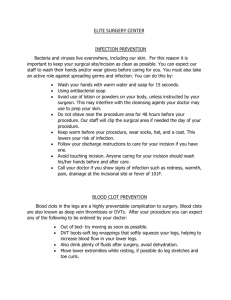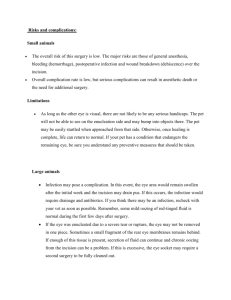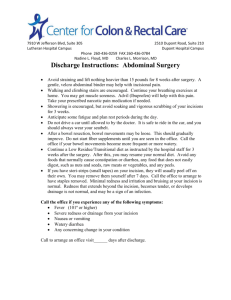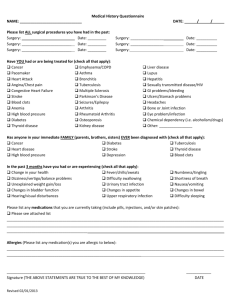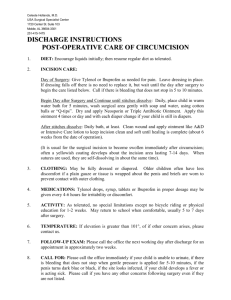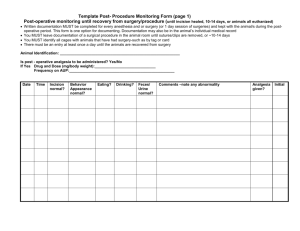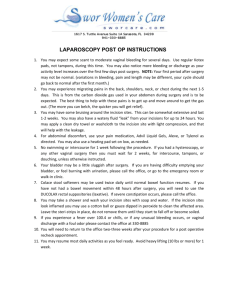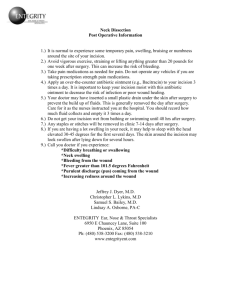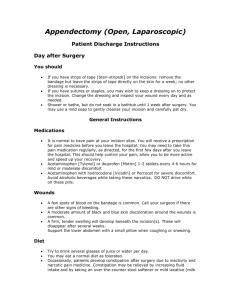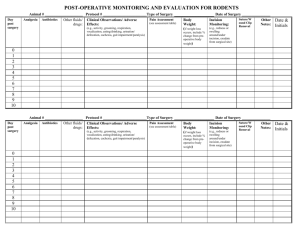signs of infection and blood clot prevention following surgery
advertisement
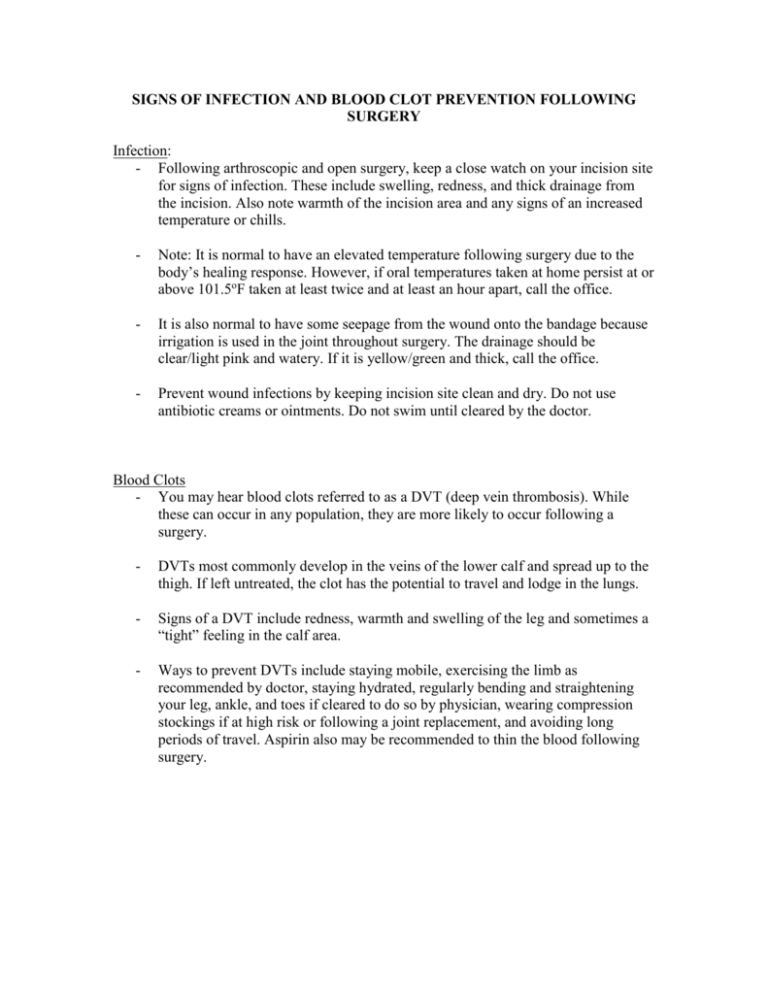
SIGNS OF INFECTION AND BLOOD CLOT PREVENTION FOLLOWING SURGERY Infection: - Following arthroscopic and open surgery, keep a close watch on your incision site for signs of infection. These include swelling, redness, and thick drainage from the incision. Also note warmth of the incision area and any signs of an increased temperature or chills. - Note: It is normal to have an elevated temperature following surgery due to the body’s healing response. However, if oral temperatures taken at home persist at or above 101.5oF taken at least twice and at least an hour apart, call the office. - It is also normal to have some seepage from the wound onto the bandage because irrigation is used in the joint throughout surgery. The drainage should be clear/light pink and watery. If it is yellow/green and thick, call the office. - Prevent wound infections by keeping incision site clean and dry. Do not use antibiotic creams or ointments. Do not swim until cleared by the doctor. Blood Clots - You may hear blood clots referred to as a DVT (deep vein thrombosis). While these can occur in any population, they are more likely to occur following a surgery. - DVTs most commonly develop in the veins of the lower calf and spread up to the thigh. If left untreated, the clot has the potential to travel and lodge in the lungs. - Signs of a DVT include redness, warmth and swelling of the leg and sometimes a “tight” feeling in the calf area. - Ways to prevent DVTs include staying mobile, exercising the limb as recommended by doctor, staying hydrated, regularly bending and straightening your leg, ankle, and toes if cleared to do so by physician, wearing compression stockings if at high risk or following a joint replacement, and avoiding long periods of travel. Aspirin also may be recommended to thin the blood following surgery.
